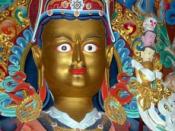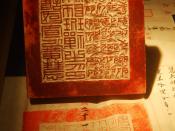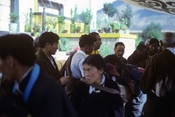Introduction
Religion always requires its people's loyal beliefs and unquestionable, sometimes irrational, devotion to it. Likewise, Tibetan Buddhism, a religion existed for centuries in the highest plateau on the world, had been believed, highly esteemed, and set above everything among the Tibetans. The Tibetan people believed that material progress alone would not give lasting pleasure or satisfaction which means that scientific technology, new discoveries and all kinds of material progress cannot possibly bring ultimate and permanent pleasure to human beings, for material progress always stimulates desire for even further progress, so that such pleasure as it brings is only ephemeral. According to this Tibetan Buddhism philosophy, people lived desolated without much stimulation to develop or advance the place in the old times. Lamas were the superior class of people who study Buddhism all day in the monasteries while other ordinary less respected people prayed in front of the Buddhas and worked with total loyalty to their spiritual support.
However, this daily-life scene now will have to be said with "in the past". From the year 1959 when the China Communist Party (CCP) taken direct control over Tibet, and the escape of the highest spiritual leader, the Dalai Lama, Tibetan people's life have been completely changed. With the incoming of Hans and foreigners around the world, Tibetan people, especially the youth, now live in another style of life. Instead of wearing long robes or animal skin, they wear jeans and sneakers; the popular drink is no longer butter tea but tins of coke; Sichuan food would be more welcomed than boiled beef, etc. Not much people go to the monasteries with kneeling and kowtowing every single step. They may still pray in front of the Panchen Lama's picture every morning (the 14th Dalai Lama's picture is banned in the region). However,


